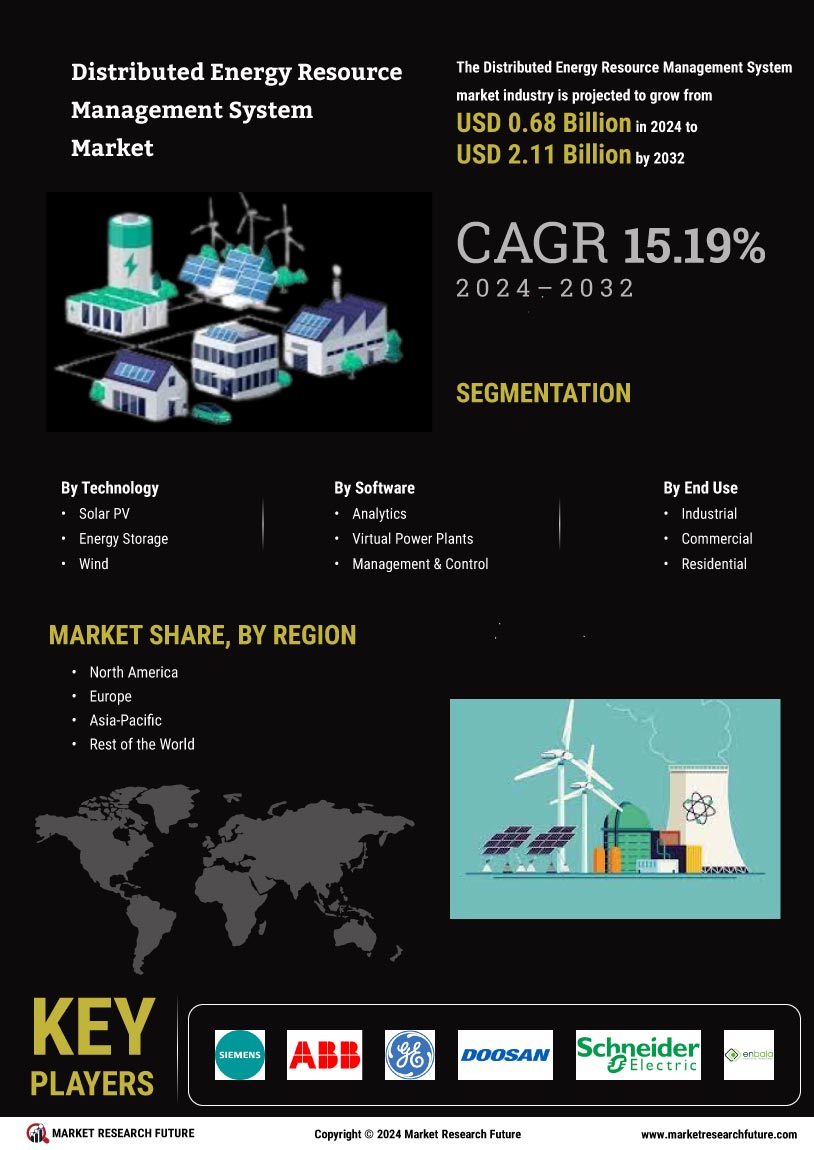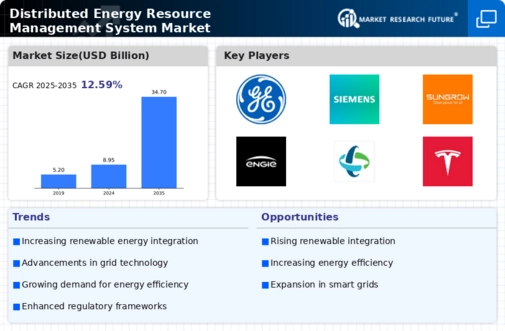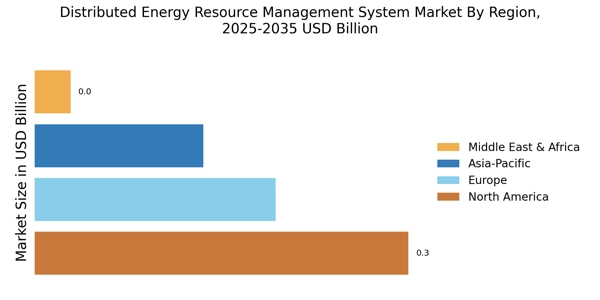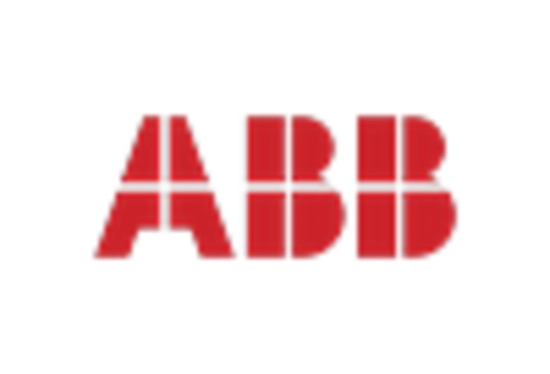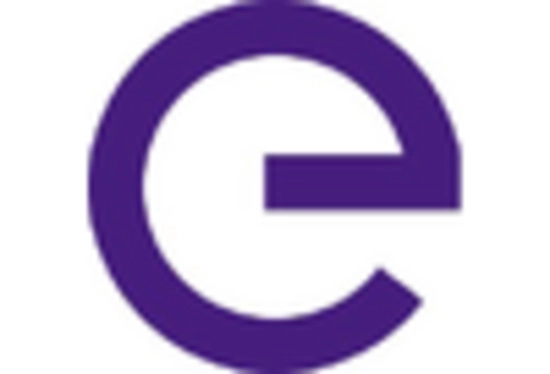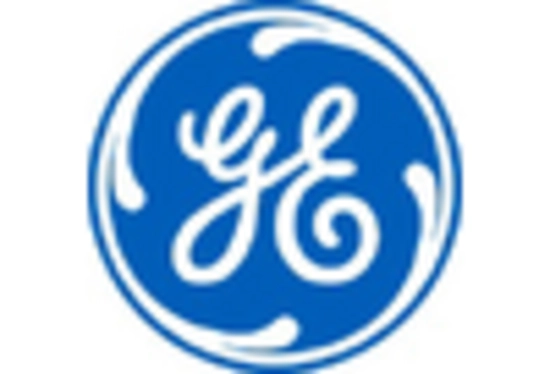Growing Demand for Energy Efficiency
The increasing demand for energy efficiency is a significant driver for the Distributed Energy Resource Management System Market. As energy costs continue to rise, both consumers and businesses are seeking solutions to reduce their energy consumption. Distributed energy resource management systems enable users to monitor and optimize their energy usage, leading to substantial cost savings. Reports suggest that energy efficiency measures could reduce energy consumption by up to 30% in certain sectors. This growing emphasis on energy efficiency is likely to propel the adoption of distributed energy resource management systems, as they provide the necessary tools to achieve these goals.
Decentralization of Energy Production
The trend towards decentralization of energy production is reshaping the landscape of the Distributed Energy Resource Management System Market. With the rise of microgrids and localized energy generation, consumers are increasingly becoming prosumers, generating their own energy. This shift necessitates advanced management systems to coordinate and optimize the use of distributed energy resources. The market for microgrids is expected to grow significantly, with estimates suggesting a value of over 30 billion USD by 2026. This decentralization trend not only enhances energy security but also drives the need for sophisticated management systems, thereby boosting the Distributed Energy Resource Management System Market.
Integration of Smart Grid Technologies
The integration of smart grid technologies is a pivotal driver for the Distributed Energy Resource Management System Market. Smart grids facilitate real-time communication between energy producers and consumers, enhancing the efficiency of energy distribution. This integration allows for better management of distributed energy resources, such as solar panels and wind turbines, leading to optimized energy usage. As of 2025, the smart grid market is projected to reach approximately 100 billion USD, indicating a robust growth trajectory. The synergy between smart grids and distributed energy resources is likely to enhance grid reliability and resilience, thereby attracting investments in the Distributed Energy Resource Management System Market.
Increased Investment in Renewable Energy
The surge in investment in renewable energy sources is a crucial driver for the Distributed Energy Resource Management System Market. Governments and private entities are channeling substantial funds into renewable energy projects, aiming to transition away from fossil fuels. In 2025, investments in renewable energy are projected to exceed 500 billion USD, reflecting a strong commitment to sustainable energy solutions. This influx of capital is likely to enhance the deployment of distributed energy resources, necessitating advanced management systems to optimize their integration into the existing grid. Consequently, the Distributed Energy Resource Management System Market stands to benefit significantly from this trend.
Technological Innovations in Energy Management
Technological innovations in energy management are propelling the growth of the Distributed Energy Resource Management System Market. Advancements in artificial intelligence, machine learning, and data analytics are enabling more sophisticated energy management solutions. These technologies allow for predictive analytics, real-time monitoring, and automated decision-making, which enhance the efficiency of distributed energy resources. As of 2025, the market for energy management systems is anticipated to reach approximately 20 billion USD, underscoring the demand for innovative solutions. The continuous evolution of technology in energy management is likely to drive the adoption of distributed energy resource management systems, facilitating a more efficient and sustainable energy landscape.
